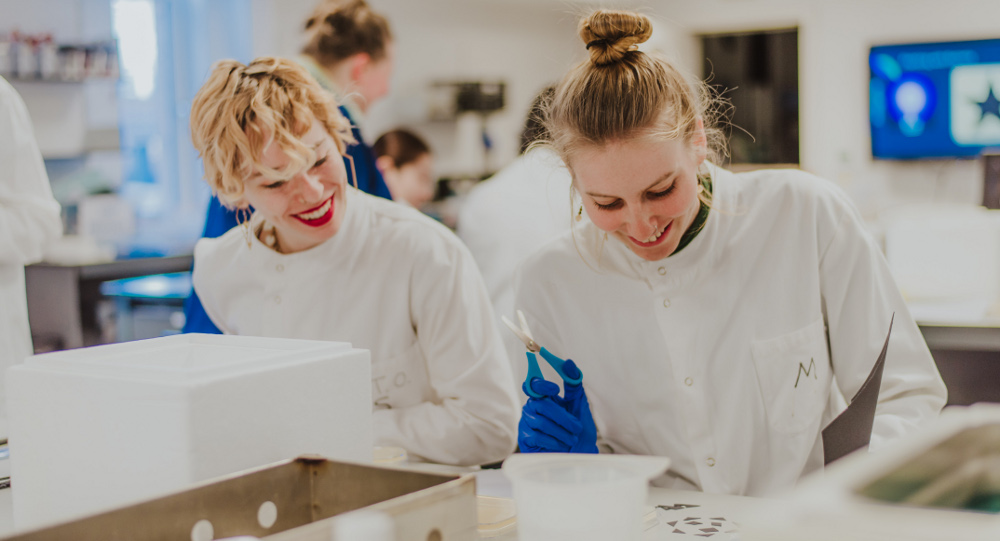
Following on from Simon Fokt’s recent post on flipped lectures , biology undergraduate Craig McMillan shares findings from his final year research project, which highlight the importance of interactive lectures in developing skills for becoming an effective scientist…
The continued use of traditional, didactic lectures as the primary mode of teaching in science degrees has long drawn concern that students are not being adequately trained for careers as scientists. This method of teaching merely encourages students to simply remember the information being delivered, as opposed to thinking about it in any detail. As students move along the trajectory from novice to expert, far more is required of them than simply accumulating a vast mass of knowledge. But what skills/abilities are important, or rather, essential for becoming an effective scientist? And where are the opportunities for these skills to be learned? These two questions formed the basis of my final year research project, which looked at interactive engagement lecture strategies in the second-year genetics course Genes and Gene Action 2 (GGA).
The main perspectives analysed on what skills or abilities were perceived to be central to the “scientific skill-set” were the lecturers and students of the course. The most popular answers in both categories named “critical thinking”, “an inquiring mind” and “creativity” as the most important skills to develop. In other words, the more generic skills were the most important, and discipline-specific skills (such as “quantitation”) were viewed as secondary. Crucially, these generic skills would not look out of place to describe a student of any discipline. It is very interesting to note how these tie in with the University of Edinburgh’s “Graduate Attributes”, which are qualities that all students, regardless of degree discipline, are expected to develop by the time they graduate.
So, if effective scientists must have the ability to form objective judgements, be able to defend or criticise data, and possess creativity that leads to novel ideas or experiments, why are lectures so often a passive process of transmitting textbook-based knowledge from lecturer to student?

The next stage in the project was to analyse a range of lecture strategies employed on the GGA course, and examine what impact these had on student learning and development of these skills. The three main techniques used throughout the course were standard lecturing, interactive “Top Hat” questions, and the novel “Quecture” lecture format. In short, a quecture is a variant of the flipped classroom model were time is built in during the lecture for students to formulate and discuss their own questions, which are then addressed via a personal response system. They can be read about in far greater detail in a previous Teaching Matters blog by their creator (and my outstanding supervisor) Heather McQueen2.
By adapting a lecture observation tool, the interactivity of lecture blocks could be measured, and, combined with the use of an electronic questionnaire sent out to students, I could measure the perceived effectiveness of interactive engagement in lectures. Overall, students felt that increased interaction did make a positive difference to their learning experience – over 80% of those surveyed believed it helped their conceptual understanding and over 60% believed it developed their scientific skill-set. The general trend showed that the more interactive a lecture block was, the more beneficial students felt them to be. Despite this, the quecture (the most interactive), was not ranked as the most effective learning strategy. There may be various reasons why this may be the case, but my predominant thought is that it is due to the change in the status quo. A completely new lecturing style combined with the requirement of preparatory work may not be welcomed by all students, many of whom may not participate in the preliminary phase. Perhaps introducing quecture at an earlier stage in their student journey would result in more willingness to engage with the concept.
One thing seems sure: providing opportunities in lectures for students to critically analyse, discuss, debate and question can only be beneficial to their development. Whilst identifying an optimum proportion of time to dedicated to interactive activities would be difficult, further research could aim to provide some general guidance as to the most effective learning environment, thereby allowing enhanced learning and promotion of the scientific skill-set.
You can read more about this project in the following article:
McMillan, C., Loads, D., & McQueen, H. A. (2018). From students to scientists: The impact of interactive engagement in lectures. New Directions in the Teaching of Physical Sciences, (13).


